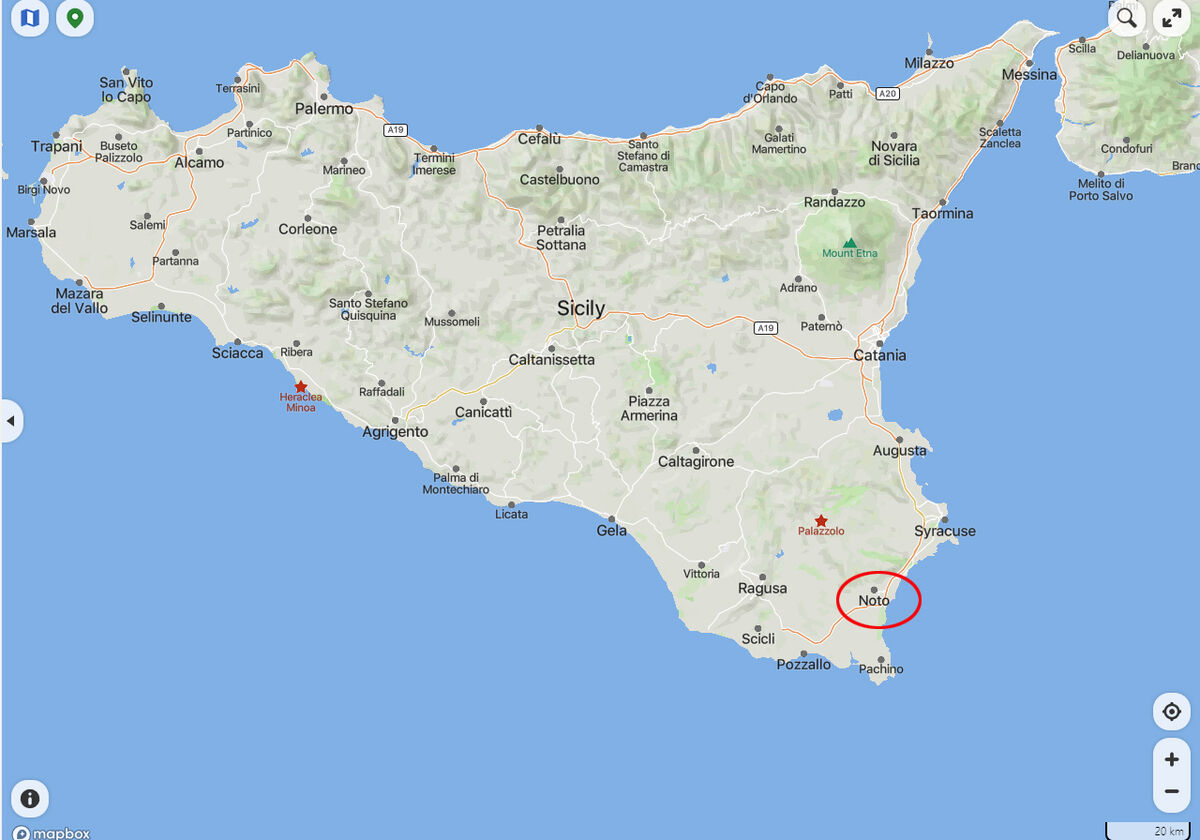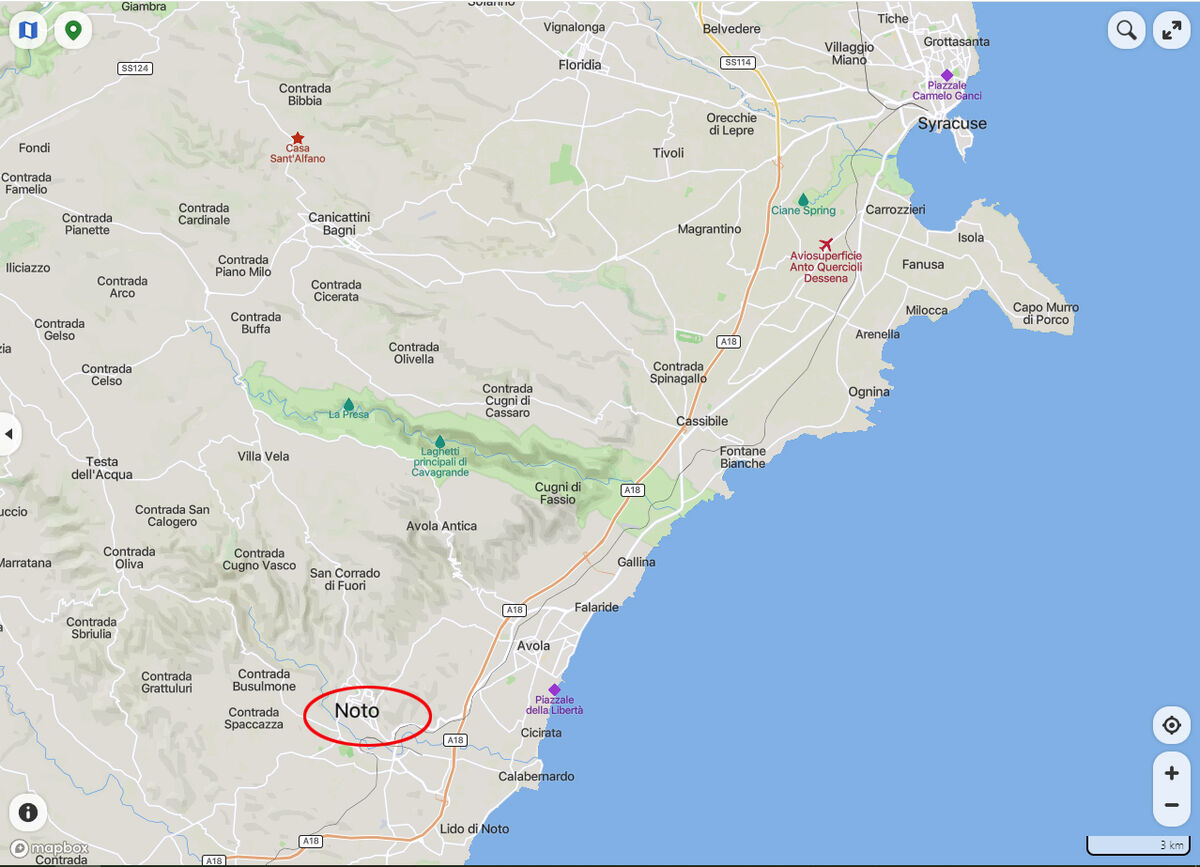Sicily: Noto Part 2 - Street Scenes
Mar 23, 2024 16:06:37 #
We continued our walk through Noto under bright blue skies and enjoyed the fantastic Baroque architecture. Some more on Noto which pretty much details our walking tour from the website: https://www.visitsicily.info/en/noto/
I wish we had more time to visit all of the sites described in the article.
NOTO
This south-eastern town, which was rebuilt in the eighteenth century, represents the heart and at the same time the starting point for visiting Baroque Sicily. Its cathedral, which was also resurrected and perfectly reconstructed after 10 years of complex works, was included in the UNESCO World Heritage List.
Its first name was Neas and it was supposedly founded by Sicilian populations at the time of the fall of Troy, on the Mendola hill. After falling into the hands of conquerors from Syracuse, the city assimilated Hellenic customs and worship and was elevated to being the site of a gymnasium.
Having fallen under Roman rule as a federated city, in the imperial era it was declared a Latin municipium: this was a specific arrangement that gave the city considerable privileges, including that of being able to govern itself with its own laws. It took its current name after it was conquered by the Arabs, who turned it into a heavily armed stronghold, and it became the capital of one of the three valleys into which they divided Sicily, namely Val di Noto. After two centuries of Muslim rule, in 1090 Noto negotiated a surrender to Roger.
The history of Noto has been marked by events caused by nature as well as by people: indeed, in 1693 it was destroyed by an earthquake that struck the whole of south-eastern Sicily.
Conceived as a large theatre without a backstage, and as a free and open city, Noto rose again, sumptuous and superb. The architectural history of the new city was dominated by the artistic flair of the three architects Rosario Gagliardi, Vincenzo Sinatra and Paolo Labisi, who were able to develop an amazing masterpiece of architectural unity. While living and working in the province, these three different figures gave the city an original imprint that goes beyond the rigid Baroque language, enriching it with Renaissance, Spanish and neoclassical elements and giving life to an imaginative and faintly dreamy style.
The time has come to visit the city. We enter the city from the east, passing under the Triumphal Arch that will introduce us to Corso Vittorio Emanuele, the heart of Noto. In 1838 Ferdinand of Bourbon did the same when he inaugurated the monument. If we look up we can observe three symbolic sculptures on top of it: a crenelated tower representing power, a dog, symbolising loyalty, and a pelican in the centre to represent sacrifice.
This royal gateway was also built with the characteristic golden yellow limestone used for the construction of the city’s churches and palaces. It is a very particular kind of limestone due to its adaptability and that is why it was chosen, to allow the elaborate cut of the monuments and because it radiates a strong light at the same time. As the sun goes down you will notice how the warm colour of the buildings stands out in the light of the sunset, creating an atmosphere that captures your heart.
Let’s enjoy a walk: it’s very pleasant to stroll up and down the main street Corso Vittorio Emanuele. On the right, above Piazza Immacolata, the Church of San Francesco all’Immacolata rises at the top of an imposing staircase. Inside the eighteenth-century church, we can note the single nave, design according to the Franciscan custom, and white walls decorated with Rococo-style stucco. Attached to the church is the Franciscan convent.
This is just one of the many churches that we will encounter along the way. Noto was rebuilt after a powerful earthquake and this allowed the architects of the time maximum freedom to design and create an urban layout that can be described as “spectacular”. The three main streets, from east to west, were designed to be illuminated by the sun at all times. The urban planning intended for them to be destined to the three main social classes: the main street for the clergy, the upper one for the nobility and the lower one for the people. This is the reason behind the presence of so many churches along Corso Vittorio Emanuele.
The Church of Santa Chiara, on the left side of the Corso, features a very delicate Baroque style. The small and oval-shaped interior is decorated with stuccos and cherubs, and is given a harmonious feel by twelve columns. Let’s go to the adjoining cloistered convent. It is an interesting world to discover and you can enjoy a beautiful view from the terrace.
The Cathedral, which stands at the top of a monumental staircase, was begun a few months after the earthquake of 1693 but was only completed in 1770. The façade is rather bare with little ornamentation and extravagance and incorporates Baroque motifs and classical elements. The Church has three naves, divided by high pillars. The silver Ark of San Corrado, the patron saint of the city, is kept in the chapel at the bottom of the right aisle. The reconstruction of the cathedral after the disastrous collapse of 1996 took place over more than 10 years by employing modern techniques that respected the eighteenth-century style and using the same materials from that time. They did a great job! A symbol of the city’s rebirth, it is now included in the UNESCO World Heritage List.
Opposite the cathedral is Palazzo Ducezio, seat of the Town Hall. Designed by architect Sinatra, the building is raised above the square on which it stands. It was built between 1746 and 1830 on a single elevation and a second floor was only added in the 1950s, thus modifying the original neoclassical line. Inside, the reception hall is an explosion of magnificence, with an abundance of gold and stuccoes.
Continuing on the route, on the right we take Via Nicolaci, which is famous for its Infiorata, or flower festival. In May, teams of artists compose a mosaic of multicoloured petals, forming a carpet that covers the cobbles of the street. This floral event has a global perspective: every year the theme is dedicated to a different country.
The street ends with the beautiful concave façade of the Church of Montevergine, captured between two bell towers. On the left, the rounded balconies of Palazzo Nicolaci Villadorata stand out, representing the maximum expression of Noto’s baroque style. The shelves that support them are decorated with animal shapes including spirals and arabesques.
The palace, built by the architect Nicolaci in 1731, has no fewer than 90 rooms with frescoed vaults and eighteenth-century paintings. For a long time it was the main residence of the princes of Villadorata.
Continuing the walk on the Corso, immediately on the left we find the Church of San Carlo and the Jesuit College, with its large four-column portal surmounted by monstrous gargoyles. Inside the church, we can go up the bell tower to enjoy the panoramic view of the city centre.
At the end of the street, we cross Piazza XVI Maggio with the Church of San Domenico and the Villetta di Ercole. The fountain and the benches will convince us to take a short break and admire the elegant Vittorio Emanuele III Theatre.
Before leaving and setting off again to discover the other wonderful places in the surrounding area, such as Avola and Marzamemi, we should visit some of the most prestigious pastry shops. The exquisite desserts here are made to perfection, thanks to a continuous quest for a balance in the combinations of ingredients and aromas, which is the result of an intimate, almost philosophical approach to the earth. The interior furnishings are amazing. The atmosphere between the outdoor tables where you can sit and order a slice of bitter orange and saffron cake, or even a simple granita, is scintillating. But it will be precisely these moments of absolute pleasure that will encapsulate the sweet memory of Noto.
For more images of Noto, please see my prior posts:
https://www.uglyhedgehog.com/t-802612-1.html#14521681
https://www.uglyhedgehog.com/t-802778-1.html#14525101
I hope you enjoy these!
Mark
I wish we had more time to visit all of the sites described in the article.
NOTO
This south-eastern town, which was rebuilt in the eighteenth century, represents the heart and at the same time the starting point for visiting Baroque Sicily. Its cathedral, which was also resurrected and perfectly reconstructed after 10 years of complex works, was included in the UNESCO World Heritage List.
Its first name was Neas and it was supposedly founded by Sicilian populations at the time of the fall of Troy, on the Mendola hill. After falling into the hands of conquerors from Syracuse, the city assimilated Hellenic customs and worship and was elevated to being the site of a gymnasium.
Having fallen under Roman rule as a federated city, in the imperial era it was declared a Latin municipium: this was a specific arrangement that gave the city considerable privileges, including that of being able to govern itself with its own laws. It took its current name after it was conquered by the Arabs, who turned it into a heavily armed stronghold, and it became the capital of one of the three valleys into which they divided Sicily, namely Val di Noto. After two centuries of Muslim rule, in 1090 Noto negotiated a surrender to Roger.
The history of Noto has been marked by events caused by nature as well as by people: indeed, in 1693 it was destroyed by an earthquake that struck the whole of south-eastern Sicily.
Conceived as a large theatre without a backstage, and as a free and open city, Noto rose again, sumptuous and superb. The architectural history of the new city was dominated by the artistic flair of the three architects Rosario Gagliardi, Vincenzo Sinatra and Paolo Labisi, who were able to develop an amazing masterpiece of architectural unity. While living and working in the province, these three different figures gave the city an original imprint that goes beyond the rigid Baroque language, enriching it with Renaissance, Spanish and neoclassical elements and giving life to an imaginative and faintly dreamy style.
The time has come to visit the city. We enter the city from the east, passing under the Triumphal Arch that will introduce us to Corso Vittorio Emanuele, the heart of Noto. In 1838 Ferdinand of Bourbon did the same when he inaugurated the monument. If we look up we can observe three symbolic sculptures on top of it: a crenelated tower representing power, a dog, symbolising loyalty, and a pelican in the centre to represent sacrifice.
This royal gateway was also built with the characteristic golden yellow limestone used for the construction of the city’s churches and palaces. It is a very particular kind of limestone due to its adaptability and that is why it was chosen, to allow the elaborate cut of the monuments and because it radiates a strong light at the same time. As the sun goes down you will notice how the warm colour of the buildings stands out in the light of the sunset, creating an atmosphere that captures your heart.
Let’s enjoy a walk: it’s very pleasant to stroll up and down the main street Corso Vittorio Emanuele. On the right, above Piazza Immacolata, the Church of San Francesco all’Immacolata rises at the top of an imposing staircase. Inside the eighteenth-century church, we can note the single nave, design according to the Franciscan custom, and white walls decorated with Rococo-style stucco. Attached to the church is the Franciscan convent.
This is just one of the many churches that we will encounter along the way. Noto was rebuilt after a powerful earthquake and this allowed the architects of the time maximum freedom to design and create an urban layout that can be described as “spectacular”. The three main streets, from east to west, were designed to be illuminated by the sun at all times. The urban planning intended for them to be destined to the three main social classes: the main street for the clergy, the upper one for the nobility and the lower one for the people. This is the reason behind the presence of so many churches along Corso Vittorio Emanuele.
The Church of Santa Chiara, on the left side of the Corso, features a very delicate Baroque style. The small and oval-shaped interior is decorated with stuccos and cherubs, and is given a harmonious feel by twelve columns. Let’s go to the adjoining cloistered convent. It is an interesting world to discover and you can enjoy a beautiful view from the terrace.
The Cathedral, which stands at the top of a monumental staircase, was begun a few months after the earthquake of 1693 but was only completed in 1770. The façade is rather bare with little ornamentation and extravagance and incorporates Baroque motifs and classical elements. The Church has three naves, divided by high pillars. The silver Ark of San Corrado, the patron saint of the city, is kept in the chapel at the bottom of the right aisle. The reconstruction of the cathedral after the disastrous collapse of 1996 took place over more than 10 years by employing modern techniques that respected the eighteenth-century style and using the same materials from that time. They did a great job! A symbol of the city’s rebirth, it is now included in the UNESCO World Heritage List.
Opposite the cathedral is Palazzo Ducezio, seat of the Town Hall. Designed by architect Sinatra, the building is raised above the square on which it stands. It was built between 1746 and 1830 on a single elevation and a second floor was only added in the 1950s, thus modifying the original neoclassical line. Inside, the reception hall is an explosion of magnificence, with an abundance of gold and stuccoes.
Continuing on the route, on the right we take Via Nicolaci, which is famous for its Infiorata, or flower festival. In May, teams of artists compose a mosaic of multicoloured petals, forming a carpet that covers the cobbles of the street. This floral event has a global perspective: every year the theme is dedicated to a different country.
The street ends with the beautiful concave façade of the Church of Montevergine, captured between two bell towers. On the left, the rounded balconies of Palazzo Nicolaci Villadorata stand out, representing the maximum expression of Noto’s baroque style. The shelves that support them are decorated with animal shapes including spirals and arabesques.
The palace, built by the architect Nicolaci in 1731, has no fewer than 90 rooms with frescoed vaults and eighteenth-century paintings. For a long time it was the main residence of the princes of Villadorata.
Continuing the walk on the Corso, immediately on the left we find the Church of San Carlo and the Jesuit College, with its large four-column portal surmounted by monstrous gargoyles. Inside the church, we can go up the bell tower to enjoy the panoramic view of the city centre.
At the end of the street, we cross Piazza XVI Maggio with the Church of San Domenico and the Villetta di Ercole. The fountain and the benches will convince us to take a short break and admire the elegant Vittorio Emanuele III Theatre.
Before leaving and setting off again to discover the other wonderful places in the surrounding area, such as Avola and Marzamemi, we should visit some of the most prestigious pastry shops. The exquisite desserts here are made to perfection, thanks to a continuous quest for a balance in the combinations of ingredients and aromas, which is the result of an intimate, almost philosophical approach to the earth. The interior furnishings are amazing. The atmosphere between the outdoor tables where you can sit and order a slice of bitter orange and saffron cake, or even a simple granita, is scintillating. But it will be precisely these moments of absolute pleasure that will encapsulate the sweet memory of Noto.
For more images of Noto, please see my prior posts:
https://www.uglyhedgehog.com/t-802612-1.html#14521681
https://www.uglyhedgehog.com/t-802778-1.html#14525101
I hope you enjoy these!
Mark
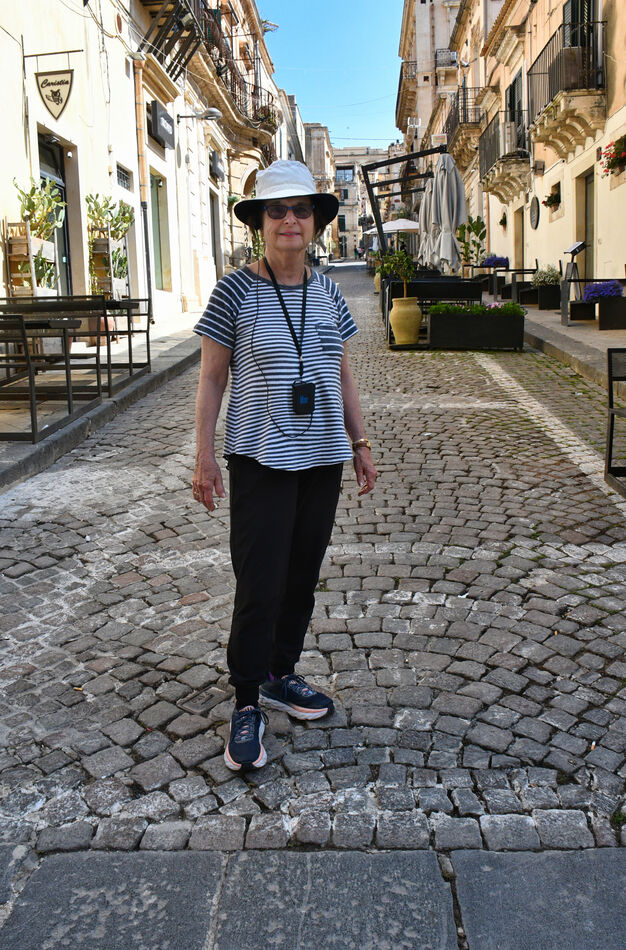
(Download)
Church of San Francesco all'Immacolata
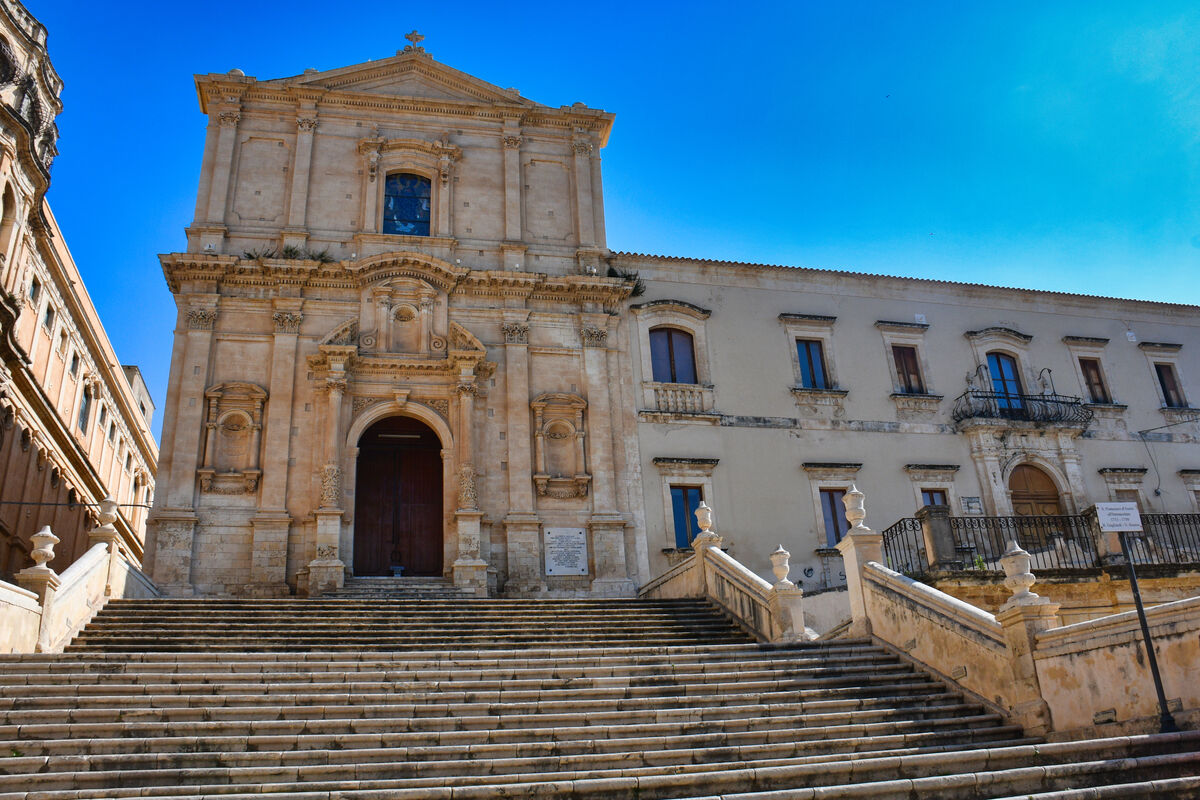
(Download)
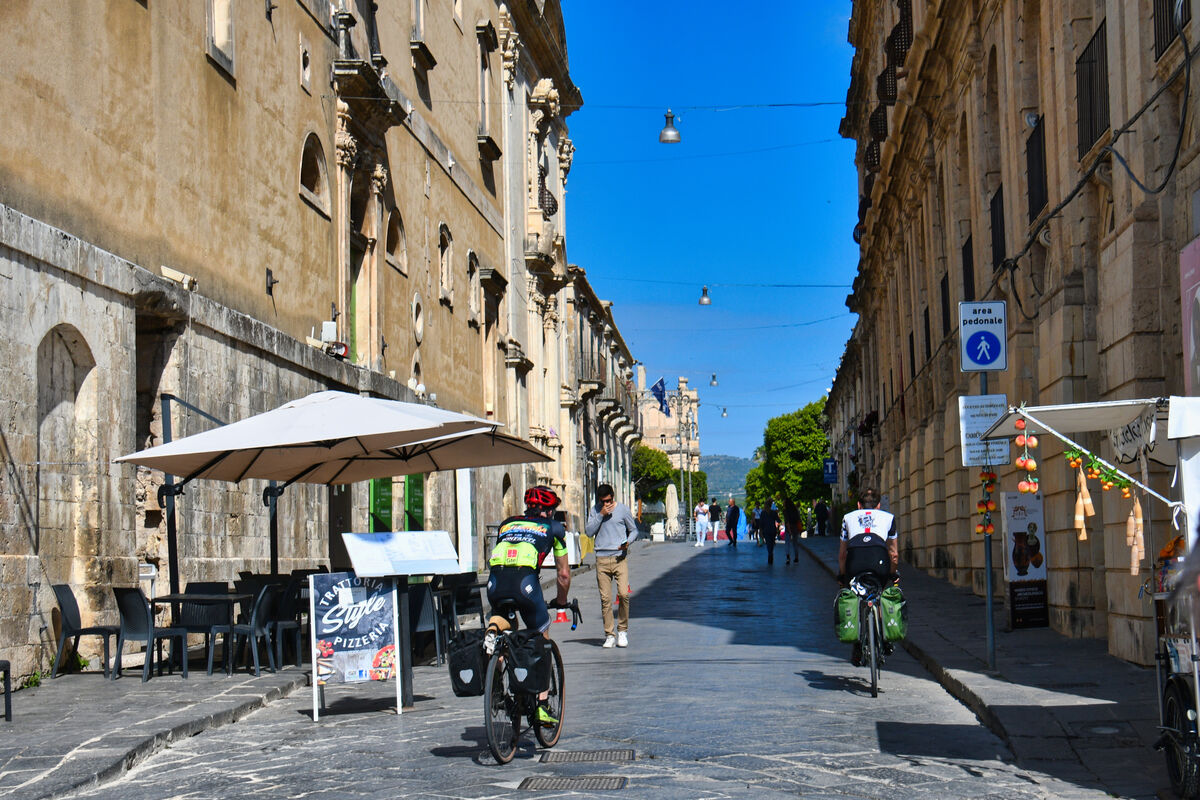
(Download)
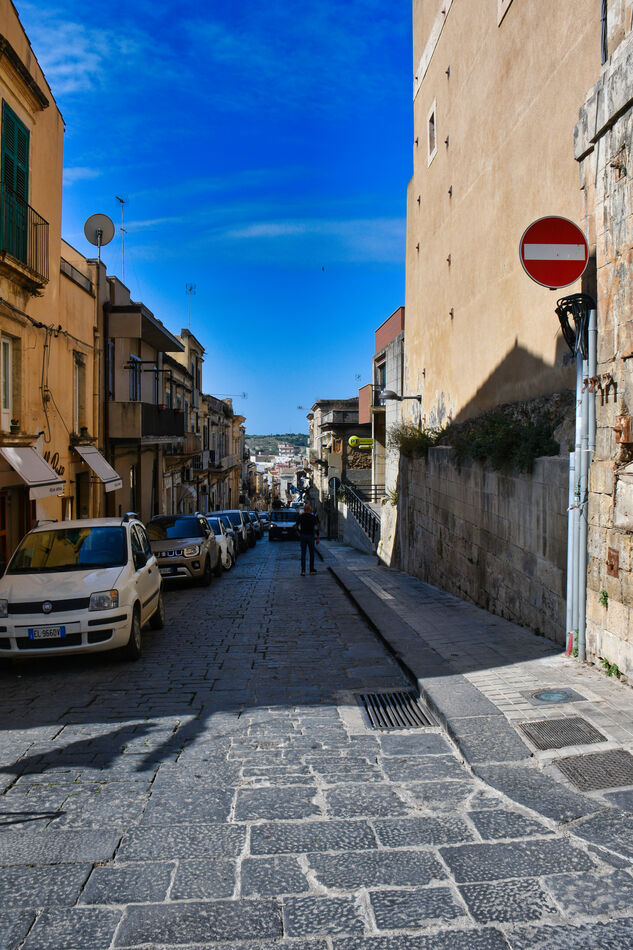
(Download)
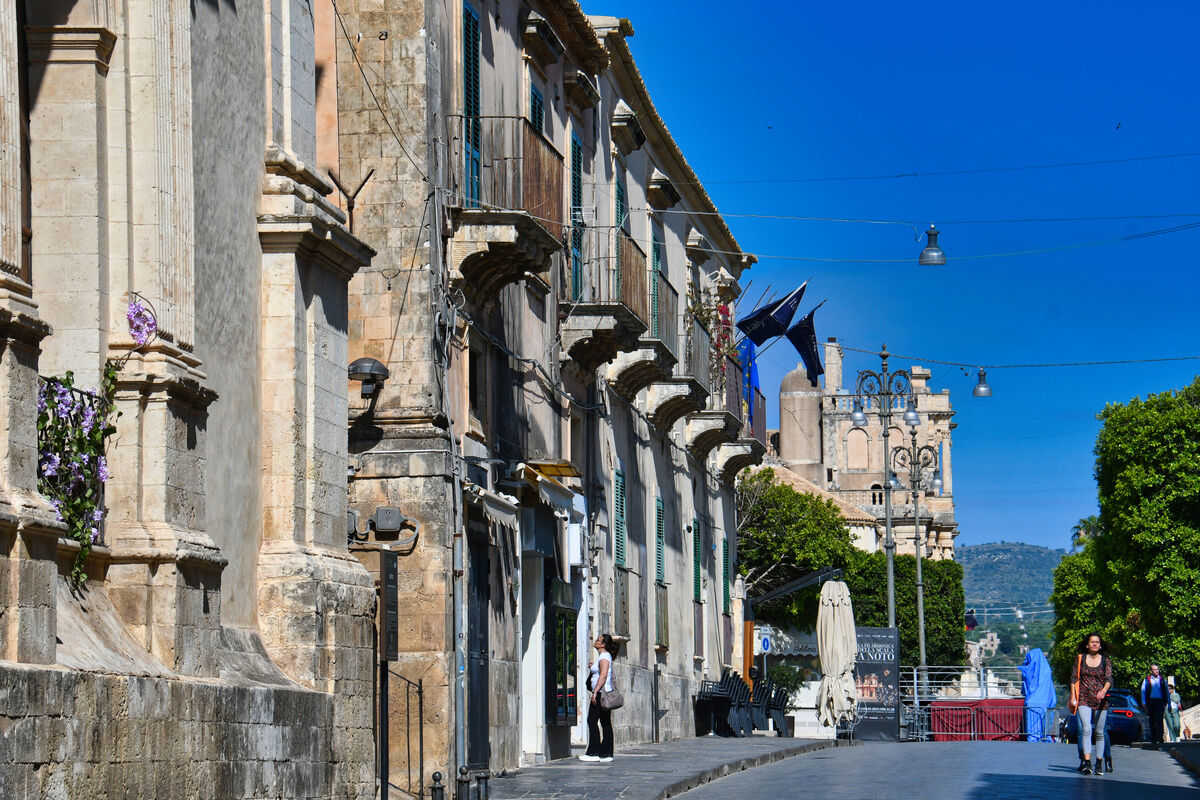
(Download)
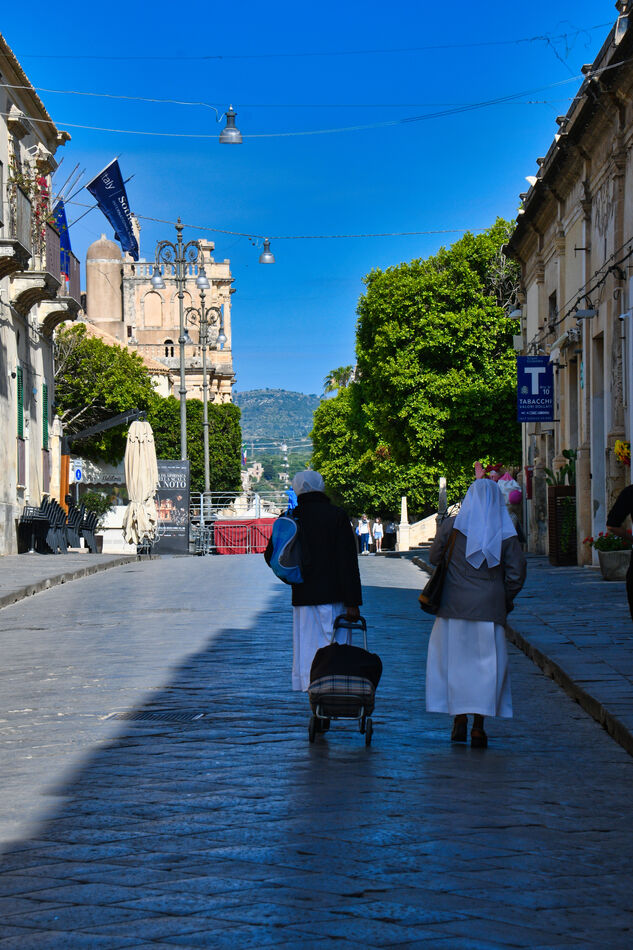
(Download)
Porta Reale with a a view back of the main street.
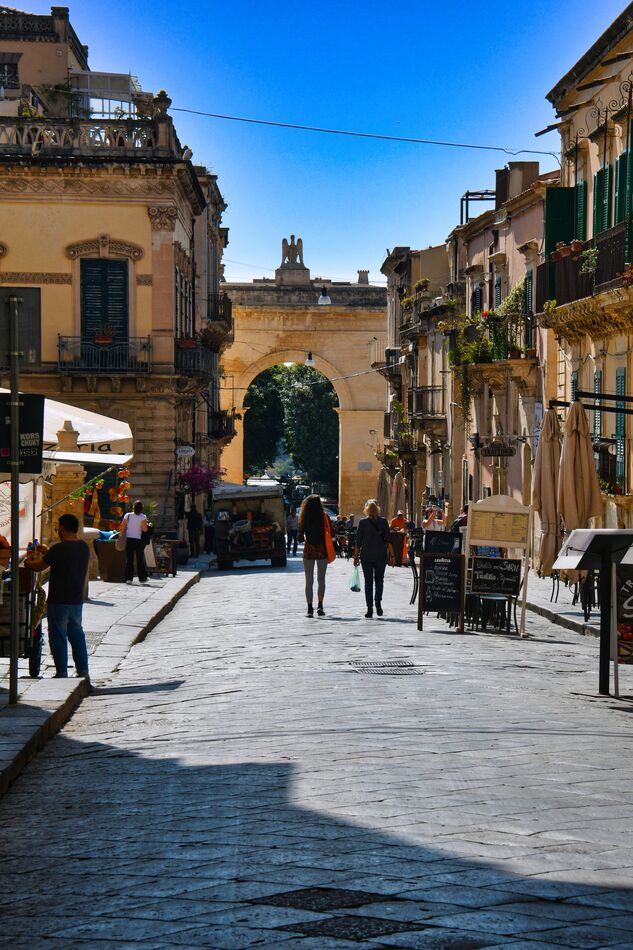
(Download)
Church of Santa Chiara di Noto was designed in 1730 by the architect Rosario Gagliardi and completed in 1758.
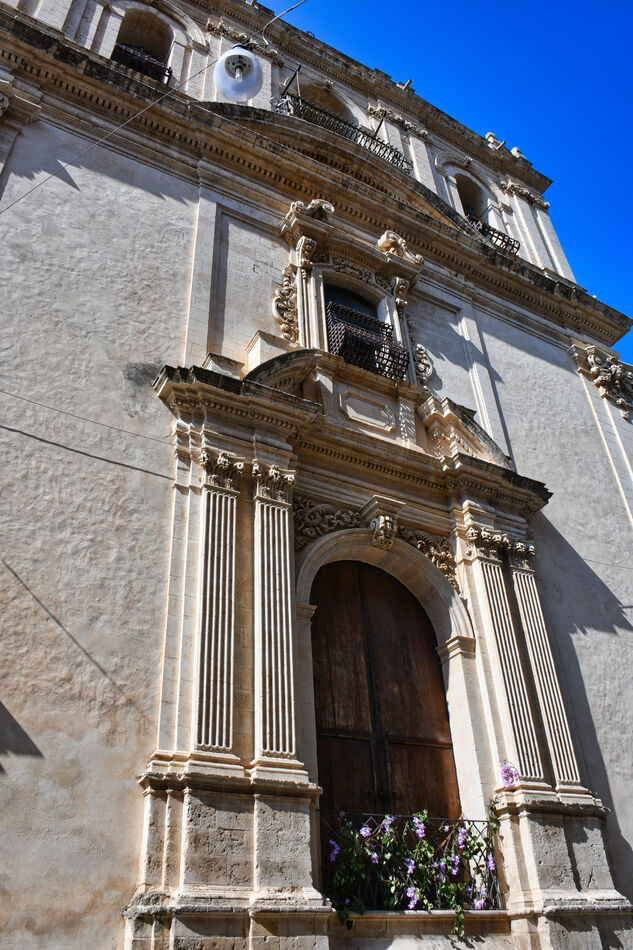
(Download)
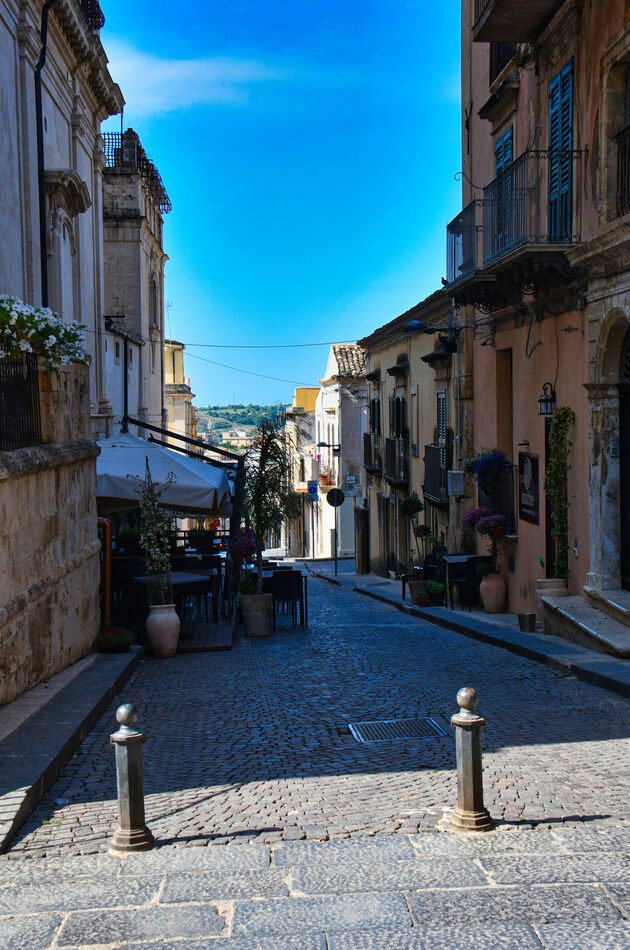
(Download)
Inspired by French palace architecture of the 17th century, graceful, porticoed Palazzo Ducezio (Noto Town Hall) is one of architect Vincenzo Sinatra's finest works.
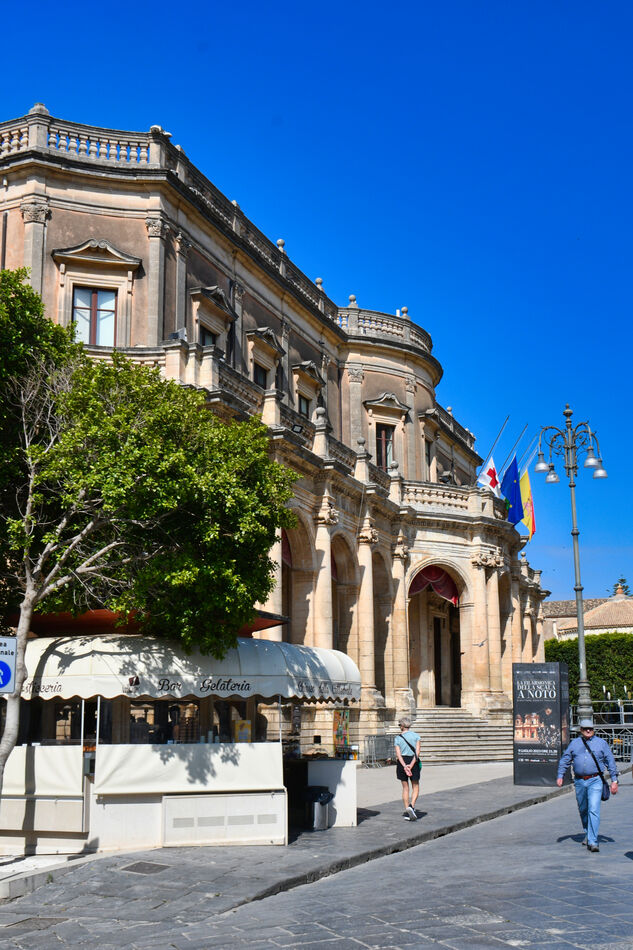
(Download)
Mar 23, 2024 16:07:42 #
Mar 23, 2024 16:10:22 #
Mar 23, 2024 16:12:06 #
Mar 23, 2024 16:31:32 #
srfmhg wrote:
We continued our walk through Noto under bright bl... (show quote)
I am sure glad you have archives for all these beauties since, if it were me, my memories couldn't remember these tons of astonishingly impactful moments 🥇🥇🥇🥇🥇
Mar 23, 2024 16:34:32 #
You really know how to convey the "feel" of a town, Mark! (Good start, as always)
Mar 23, 2024 16:35:42 #
srfmhg wrote:
We continued our walk through Noto under bright bl... (show quote)
Fantastic street scenes Mark. I just love wandering around Italian towns.
Mar 23, 2024 17:06:08 #
joecichjr wrote:
I am sure glad you have archives for all these beauties since, if it were me, my memories couldn't remember these tons of astonishingly impactful moments 🥇🥇🥇🥇🥇
Thanks very much Joe. I have to refresh my memory by lo9oking at photos on the internet


Mar 23, 2024 17:08:07 #
UTMike wrote:
You really know how to convey the "feel" of a town, Mark! (Good start, as always)
Thanks so much Mike. I was planning my posts as we walked through the town, and I always try and put my girl in the scene when I can.
Mar 23, 2024 17:09:30 #
DJphoto wrote:
Fantastic street scenes Mark. I just love wandering around Italian towns.
Thanks very much Dennis. There certainly is a special feel to them and even as a non-Italian, you feel at home.
Mar 23, 2024 18:25:20 #
Quite nice, Mark. Do you follow Gail or does he follow you on these excursions?
Mar 23, 2024 18:37:46 #
kpmac wrote:
Quite nice, Mark. Do you follow Gail or does he follow you on these excursions?
Thanks so much Ken. I always follow Gail. The view is so much more pleasing!
Mar 24, 2024 06:32:35 #
Another wonderful set of Sicily street scenes, Mark. Gail looks ready for some serious walking, beautiful.
Mar 24, 2024 07:19:25 #
Mar 24, 2024 09:07:17 #
If you want to reply, then register here. Registration is free and your account is created instantly, so you can post right away.

